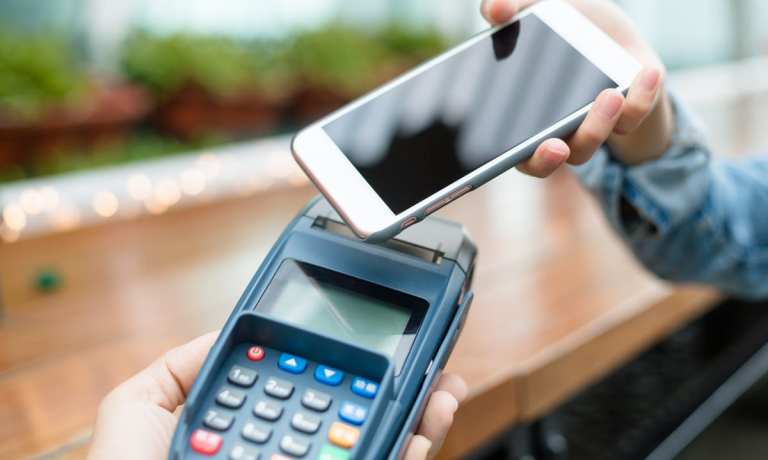
Will anyone miss keypads when they go? Will POS terminals without a clear purpose make us long for the days of swiping plastic, punching buttons and squinting at tiny screens?
In a word: no. Touchless is here to stay. Now comes the work of embedding touchless payments anywhere and everywhere people might want them.
In Beyond the Card: Toward the Cardless and Contactless Future, a PYMNTS and i2c Inc. collaboration, both roadblocks and workarounds are detailed for issuers and partners navigating untrodden pathways of consumer preference and next-gen commerce.
“Physical cards are changing form, as some NFC-capable mini-cards are being embedded in rings and other wearables. Others are becoming invisible, as cards are not only being issued ‘digital-first’ – they are becoming ‘digital-only,’ going straight from issuer to mobile wallet,” according to Beyond the Card. “This development is fitting, considering the degree to which commerce has shifted online since the pandemic. The share of total retail sales transacted online has surged since the start of this year, and this trend appears likely to hold in the months and years ahead amid continued anxieties about in-store shopping.”
Flexible Infrastructures, A Breezy CX
As this next transition takes place (let’s not call it a transformation), creating credit solutions involves both technical and regulatory complications. Partner selection is therefore critical.
“[Challenges] keeping card issuers from offering innovative cardless and contactless products are the same barriers that stall and thwart payments’ progress in general, namely organizational and technical barriers tied to the scarcity of time and resources needed to advance digital-first initiatives using legacy technology,” Jim McCarthy, president of i2c Inc., told PYMNTS. “Thankfully, these daunting hurdles are being overcome with more flexible infrastructures that make it easier to actually put [the] customer experience first.”
Destiny almost seems to have had a hand in the touchless migration, as everything was in place and apparently just needed a push. “More than three-quarters of U.S. consumers are now aware of contactless payments, a 25 percent increase from a year ago. Large majorities of them are interested in using the payment technology in grocery stores and drug stores: 83 percent and 81 percent of consumers would use contactless payments at such locations,” per the report.
Timeless Principles And New Partners
While the touchless revolution is obviously in progress, that doesn’t mean there’s no resistance. It’s still a fairly wild world of new players, and contactless isn’t in everyone’s wheelhouse.
“Despite clear mandates, the reality is that when many of today’s issuers embark on contactless and cardless initiatives, they’re asked to make trade-offs they didn’t imagine. The reasons are well-known to insiders: [Issuers are] often choosing between less-than-optimal partners that resist or can’t accommodate requirements that fall outside their established template,” McCarthy said.
He added that “executing these technologies – or any innovation, for that matter – has to start with raising our expectations, starting with our next initiative. Speed to market, flexibility, scalability and reliability may be overused words, but they are also principles that can be specified, shopped and secured in today’s marketplace, as evidenced by unwavering innovators who are designing, deploying and evolving differentiated digital-first products.”